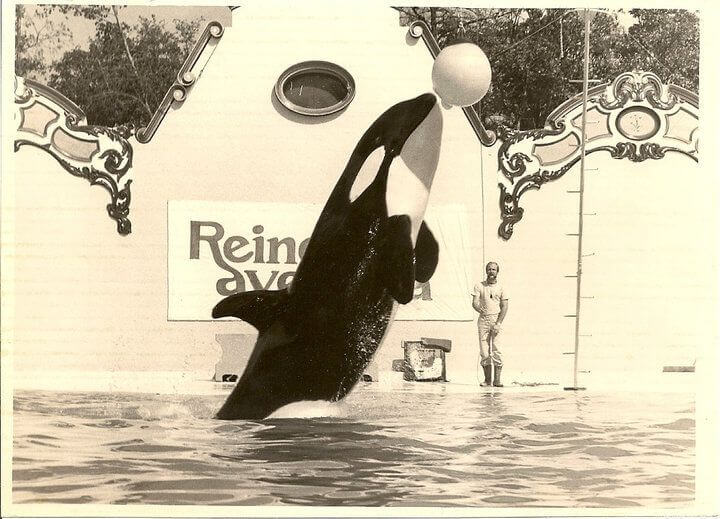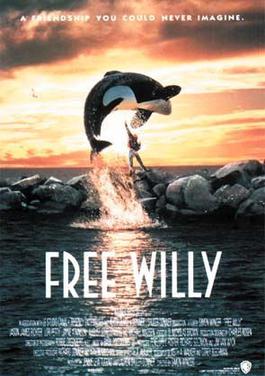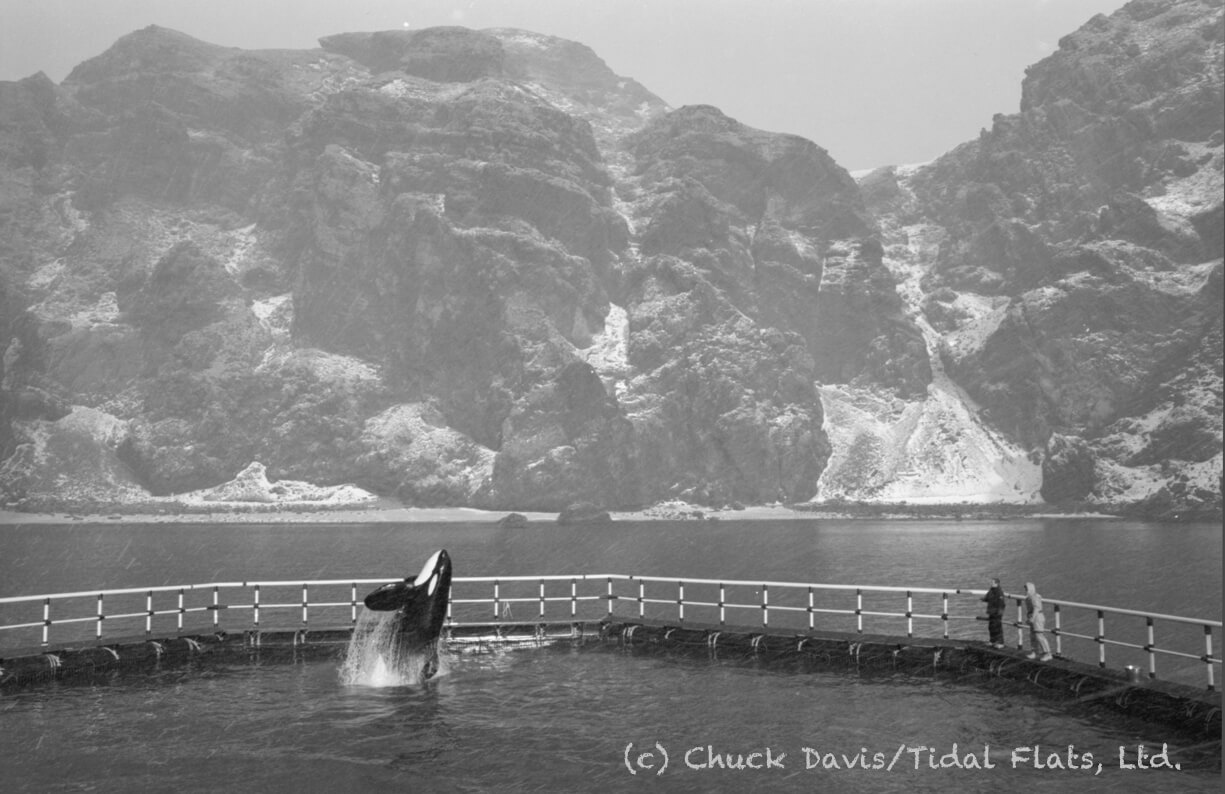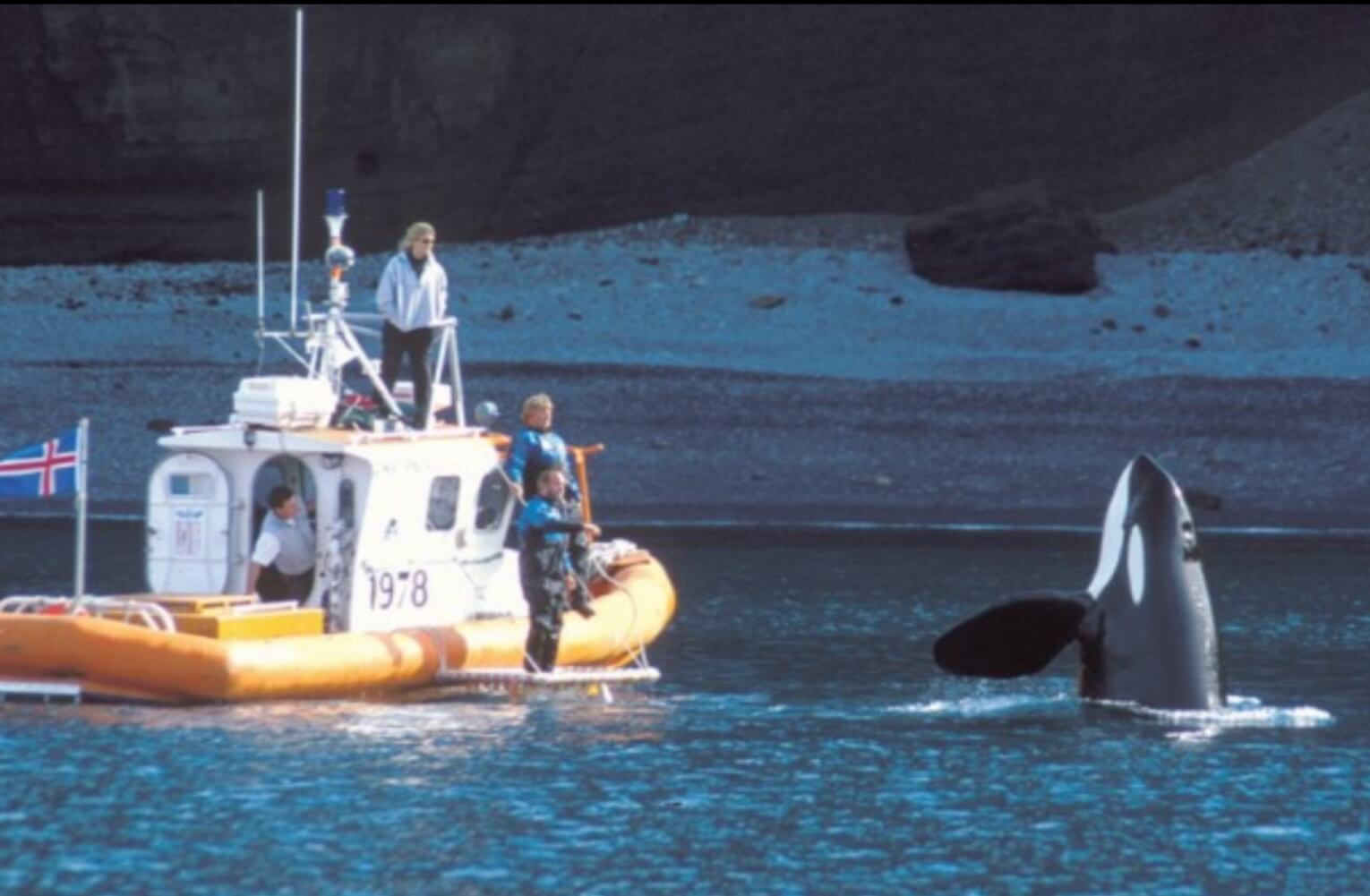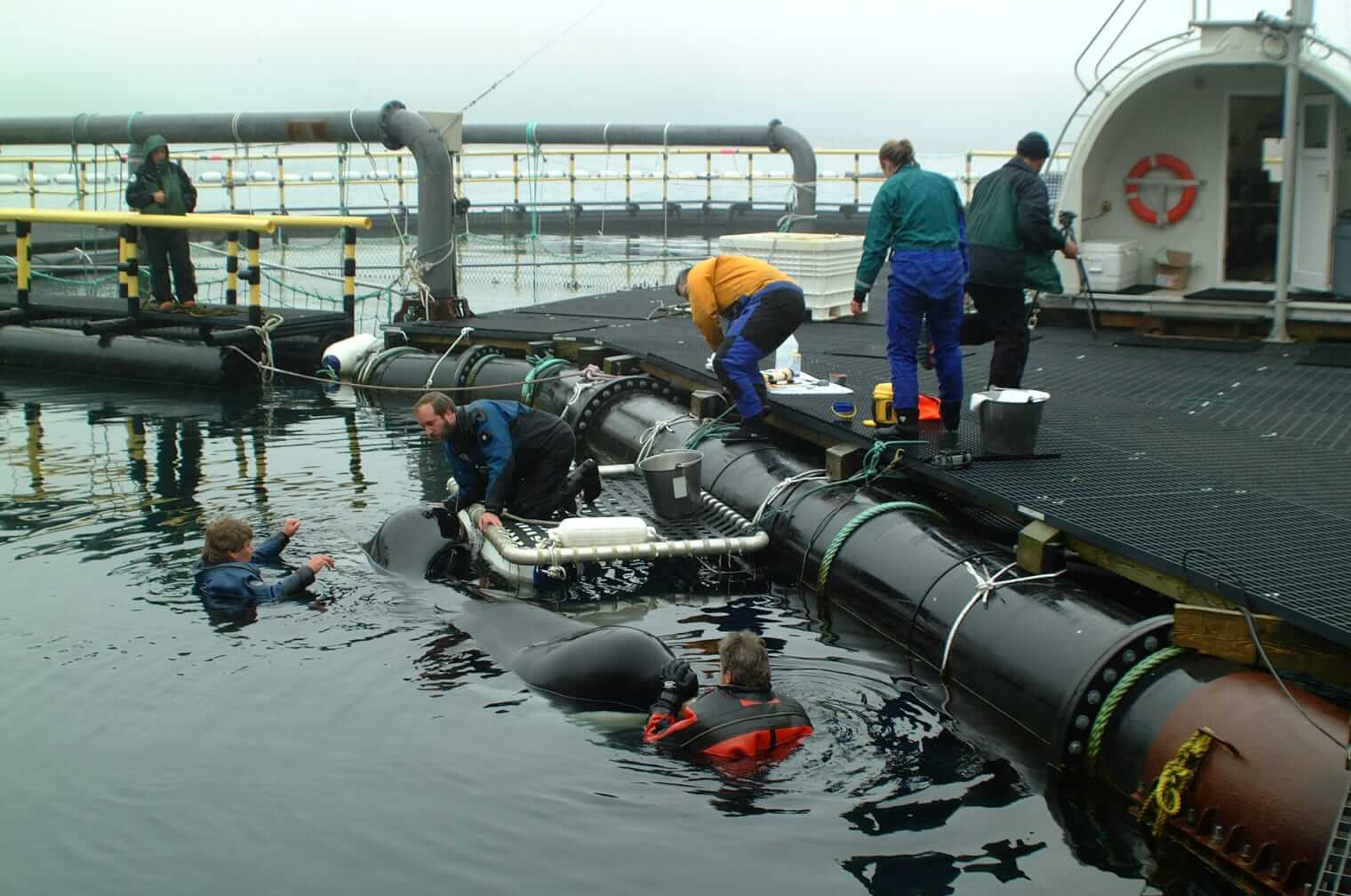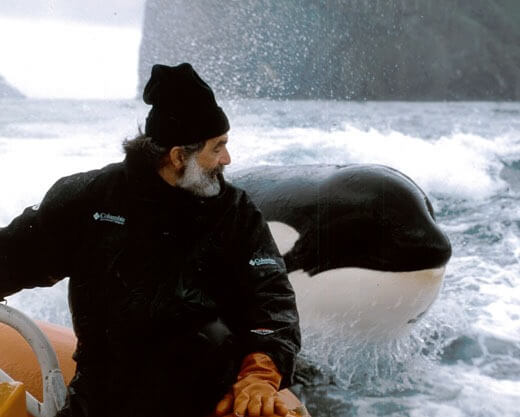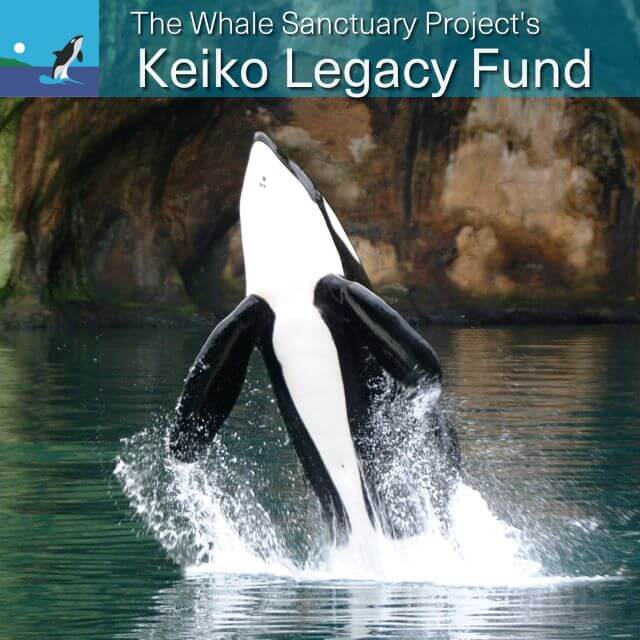Several of us on the Whale Sanctuary team (*) worked together 20 years ago to return to the ocean the famous orca Keiko, who had been the star of the movie Free Willy. It was an invaluable and rewarding experience, and one that informs much of our work today.
In this wide-ranging webinar, Charles Vinick, Executive Director of the Whale Sanctuary Project, talks about his earlier work as manager of the Keiko project and what he sees as Keiko’s legacy:
The amazing story of Keiko the orca
Keiko, you will recall, had been captured in 1979 and taken from his family in the Icelandic Ocean to Marineland Canada. From there he was sold to an amusement park in Mexico City, where he was housed in a small, shallow tank, insufficient for an adult male orca to thrive.
In 1992, Warner Brothers began filming Keiko for a movie that would tell the story of Jesse, a foster boy who befriends a captive orca named Willy and helps him escape back to the ocean.
The film became a major box office success, spawning three sequels, a television series and a video game. But unlike the character he was playing, Keiko himself didn’t get to leave the tank in which he was being housed at the amusement park. (His “stunt double” in the action sequences was an animatronic model.)
Fortunately, however, that was not the end of the story. After seeing the movie, tens of thousands of children wrote letters pleading for the return of the real-life whale to the ocean.
As a result of this intervention from all over the world, Keiko was indeed rescued, and in 1996 he was brought to a specially built large pool in Oregon, where he was treated for multiple health conditions. Two years later, he was flown to a bay on an island off the coast of Iceland, where he spent four years going on open ocean “walks”, learning to catch his own fish, and introducing himself to wild orcas, all with full-time care while preparing for a life in the open ocean.
In the summer of 2002, while in the company of a pod of orcas, Keiko left his caregivers and swam more than a thousand miles to the coast of Norway. He made his home in and around a fishing village, where he thrived for another year, free from captivity in a concrete tank before succumbing to a pneumonia-like infection.
Check out this slideshow of Keiko’s journey to freedom:
Keiko’s enduring legacy
You can also watch this video in which Charles talks with Jeff Foster, who served as Keiko’s Director of Field Operations and Research and is today our Animal Transfer & Rehab Coordinator. The video includes lots of fascinating archival footage, and at the end Charles sums up his overall takeaway from the project:
“It is very easy,” he says, “to capture a whale from the ocean. It’s much harder to put one back!”
Indeed, for all but maybe one or two of the whales on display at entertainment parks today, returning them to the ocean is not an option at all. That’s because they were born into captivity and have never seen the ocean, the sky or even a live fish.
And that’s why our focus is on seaside sanctuaries as the right future for all captive whales.
* Members of the Whale Sanctuary Project team who were also on Keiko’s team are Charles Vinick (WSP Executive Director and Board member), Naomi Rose and Dave Phillips (Board members), Jeff Foster (Animal Transfer & Rehab Coordinator), Jean-Michel Cousteau, Chuck Davis, Terry Hardie, Michael Parks, Paul Spong and Ingrid Visser (Advisory Group members).
